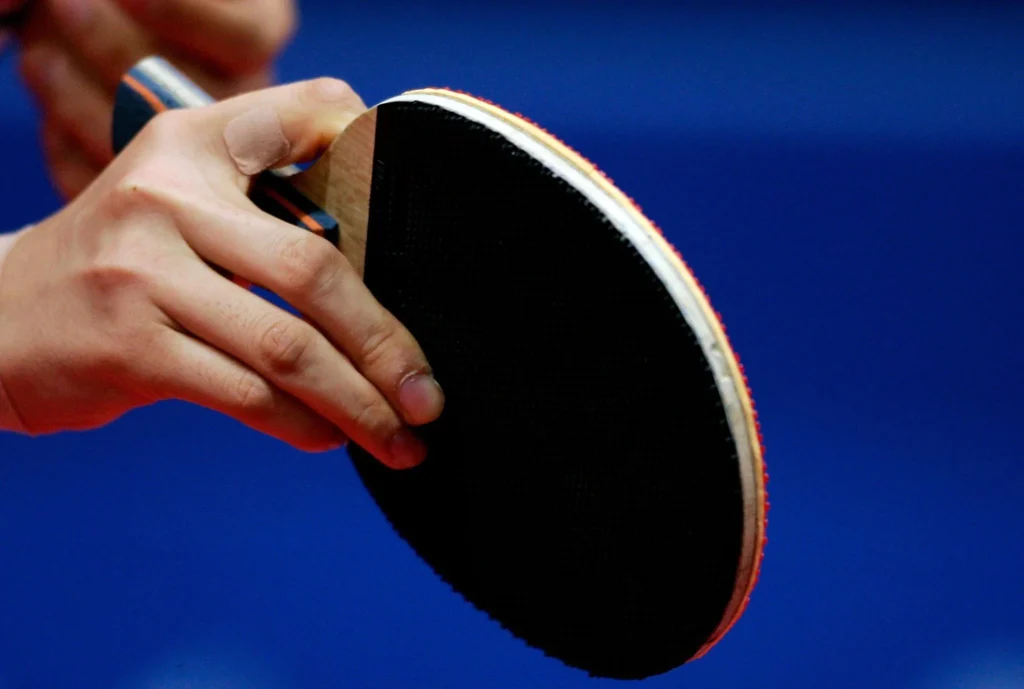Mastering table tennis starts with proper paddling during the first essential lesson, How To Hold Ping Pong Paddle. Fortunately, there’s no one-size-fits-all approach. The shakehand grip is the most frequently used grip among table tennis players. It teaches beginners essential fundamentals with great effectiveness. People who want to try new grips should start with the penhold grip but must overcome its difficulty level compared to other grips. The decision should rest on which grip most genuinely suits your comfort level and skill level comfort.
Grip & Its Impact On Your Game
How To Hold Ping Pong Paddle strongly determines how to manage and output power and spin generation capabilities. How you grip your paddle determines how well you can place balls and precisely direct your shots. The shakehand grip maintains equal power between forehand and backhand shots. However, the penhold grip gives superior wrist control, producing fast, accurate moves.
Your grip determines what types of spins you can create between topspin, backspin, and sidespin. A slight change in grip position enables better control over shot trajectory while also enabling speed control, which benefits matchup flexibility. Developing a correct grip gives you superior game management while allowing you to advance higher in your skill level.
Mastering the Shakehand Grip for Better Control
The shakehand grip is the most accepted grip technique in How To Hold Ping Pong Paddle. Make it suitable for starting players and those at professional levels. This paddle grip replicates hand-shakings through thumb-and-index finger contact with the paddle handle. Combined with the placement of all other fingers along the back side. The ergonomic position allows users to command both forehand and backhand strokes. Thanks to its excellent power control integration.
The shakehand grip is versatile because it delivers shot transitions and reliable stability for developing spin. It provides half control and great striking effectiveness for any shot scenario.
A Dynamic Style for Fast Play
The Basic Penhold Grip is popular for players who enjoy fast, aggressive play focusing on forehand shots. In this grip, the paddle is held like a pen, with the index finger and thumb forming a “V” shape at the front of the handle while the remaining fingers curl around the back. This grip offers excellent control over the paddle, especially for generating quick wrist flicks and powerful spins.
It’s perfect for players who want to play close to the table and use speed and precision. While the Basic Penhold Grip can make forehand shots feel natural and smooth, it can be more challenging for backhand strokes. It also requires players to adapt their wrist and body movements. It’s ideal for offensive players who rely on agility and speed.
Master the Art of the Chinese Penhold Grip
The Chinese Penhold Grip is a more advanced variation of the penhold style, popular among top Chinese players. This grip involves holding the paddle with the thumb and index finger pinching the front of the handle. The remaining three fingers curl around the back, creating a more compact and stable position. The Chinese Penhold provides incredible wrist flexibility, which makes it easier to generate powerful forehand loops and aggressive spins.
This grip is especially effective for players who focus on dominating the game with fast attacks and precise angles. While it offers exceptional control and power on the forehand, the challenge lies in mastering the backhand. Which often requires unique techniques or body positioning. The Chinese Penhold is ideal for players who want to know how to hold a Ping-Pong Paddle.
Dominate the Table with the Seemiller Grip
The Seemiller Grip is an offbeat paddle grip format that gained fame from American professional player Danny Seemiller. For this grip, players take the paddle by securing their index finger and thumb on the handle sides while winding their remaining three fingers down near the paddle’s base.
The innovative way the Seemiller Grip functions through one-sided paddle use demands separate wrist movements. When playing forehand and backhand shots sık, backhand strikes become possible because of this paddle grip method, which generates considerable power and speed.
Players who prefer a unique, unpredictable serving style find success with this distinct control method, the Seemiller Grip. Advanced players interested in creating unpredictability through their strokes should learn this complicated grip, although it leads to superior results in tournament play.

Don’t Let These Grip Mistakes Hold You Back!
The process of learning How To Hold Ping Pong Paddle quickly leads beginners to develop mistakes that interfere with their skill progression. A big mistake arises when you hold the paddle with excessive force. Excessive grip strength decreases your wrist’s freedom of movement and ability to apply spin control.
Your paddle grip should stay relaxed to enable fluid wrist movements. Many beginners face issues when positioning their paddle at angles beyond a comfortable natural stance. Misaligning the paddle impacts your shot path, negatively impacting your aiming accuracy. A penhold grip requires focused backhand practice because missing it can cause serious weaknesses.
Most players prefer their forehand strokes but fail to practice backhand movements, so they remain at risk during quick point exchanges. Watch your fingers during paddle play techniques. If your fingers are not correctly placed during your racquet game, you will experience discomfort and lose ball control. Your game progresses positively when you practice, improve your technique, and learn to prevent these common errors.
Frequently Asked Questions
What Grip Options Work Best When Starting?
Starting paddle players tend to learn the shakehand grip due to its natural engagement, which provides easy adjustment between forehand and backhand shots.
Is Drilling Transform Of Grips Possible Only In The Middle Of A Game?
Yet elite players might change their grip controloredly in response to specific in-game conditions.
Two Essential Questions Arise When We Consider The Generation Of Spin?
Penhold grips, especially the Chinese Penhold, have become optimal for spin generation because they allow wrist flexibility.
Conclusion
Mastering How To Hold Ping Pong Paddle is the first step toward becoming a skilled player. Whether you choose the popular shakehand grip for its versatility or dive into the more specialised penhold or Seemiller grip, each style offers unique advantages and challenges. The key is to find the most natural and comfortable grip, then practice consistently to refine your technique. Remember, it’s not just about how you hold the paddle. It’s about using it to control the game with the proper grip and a lot of practice. You’ll soon see improvements in your spin, power, and overall performance on the table.



